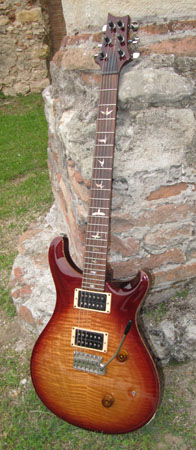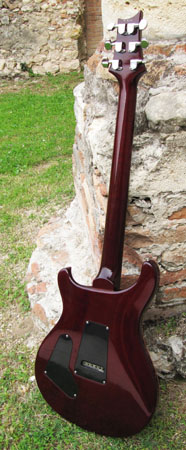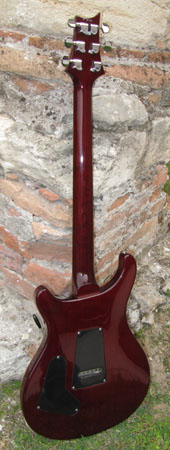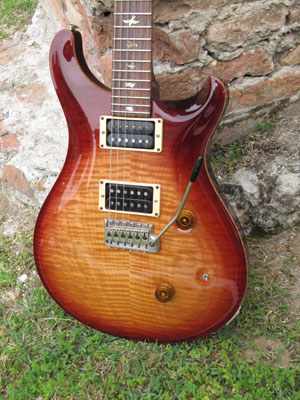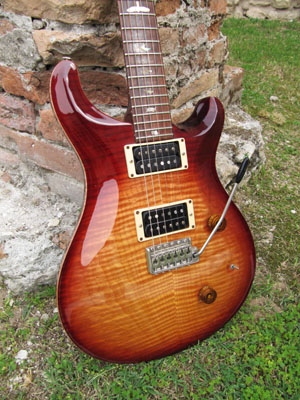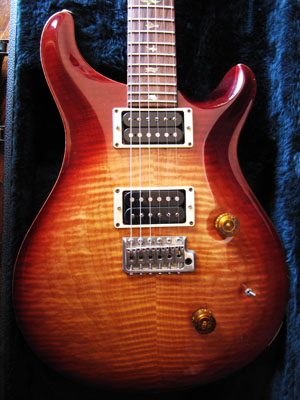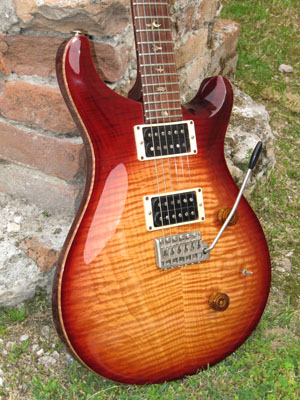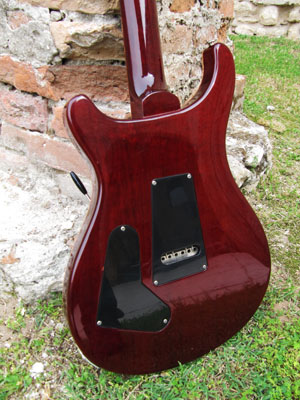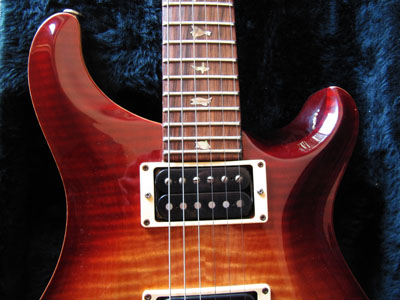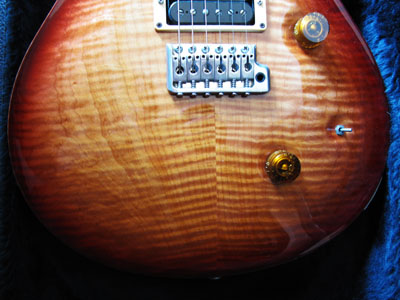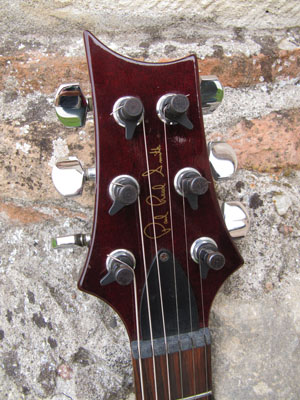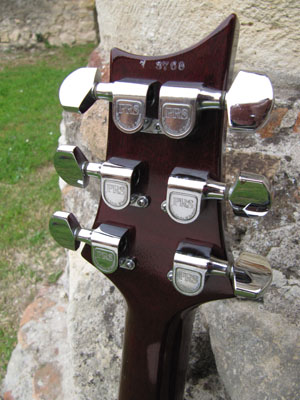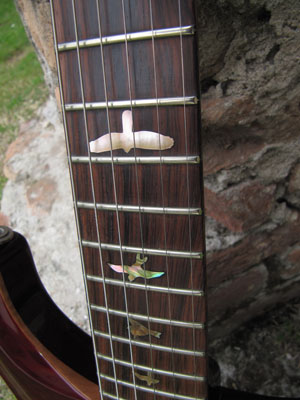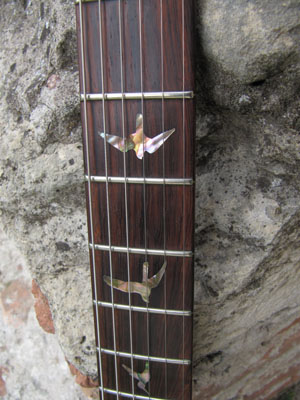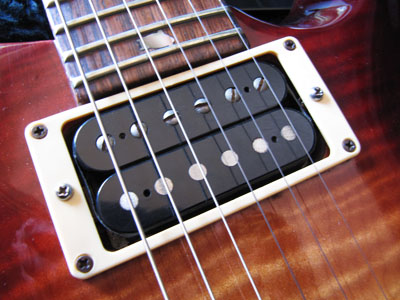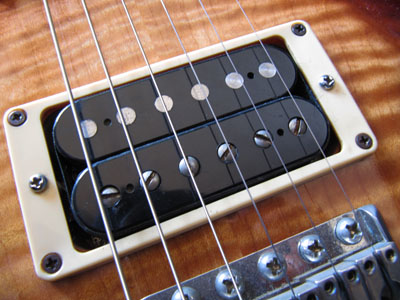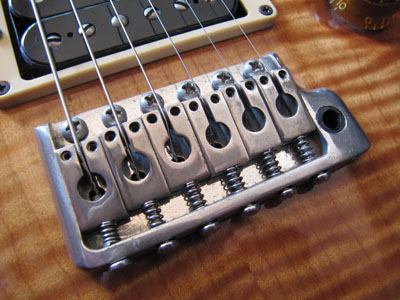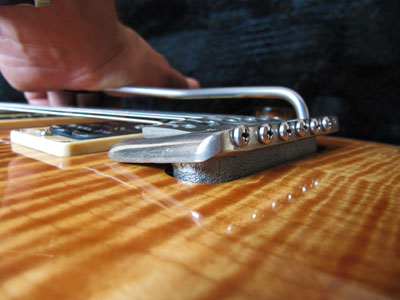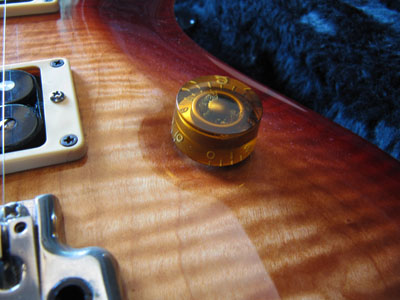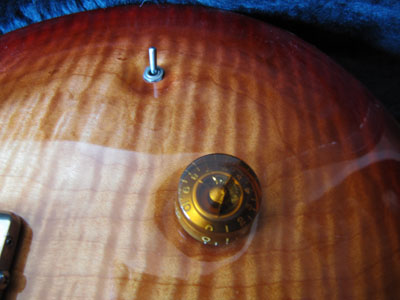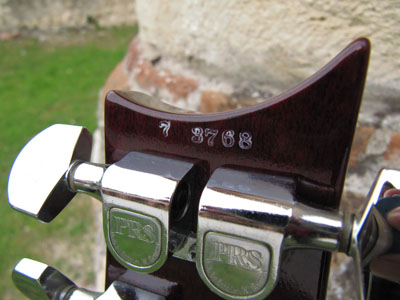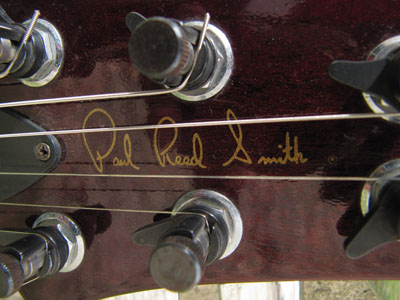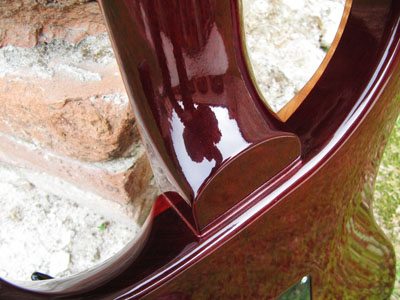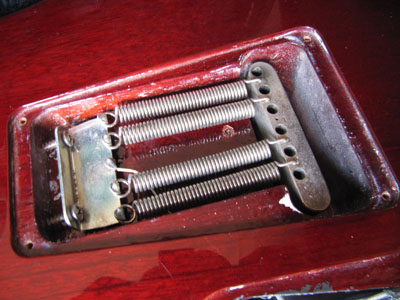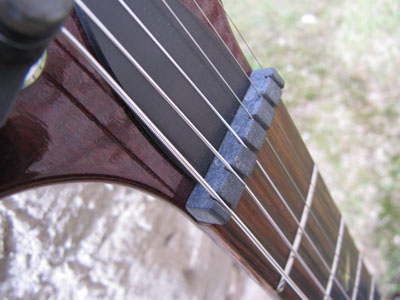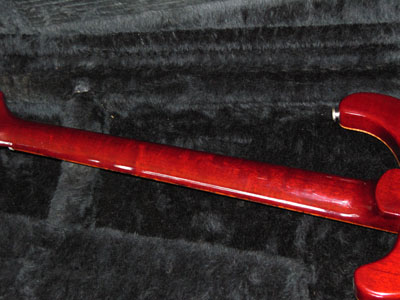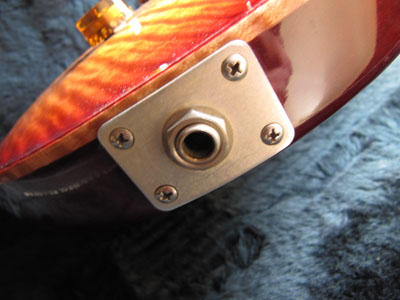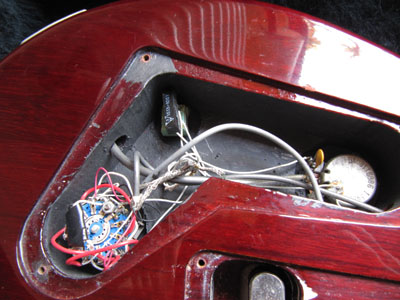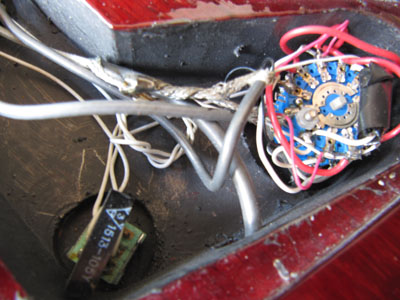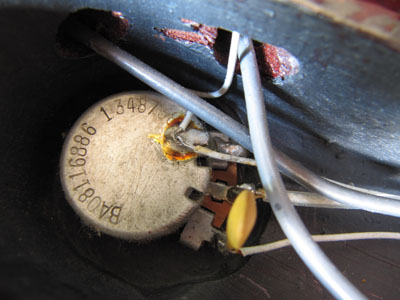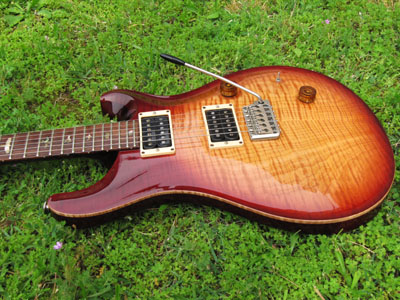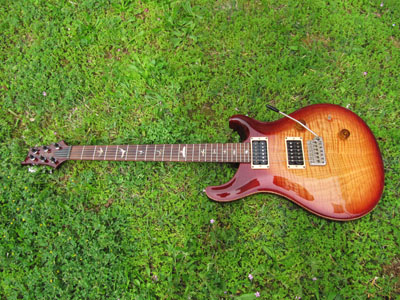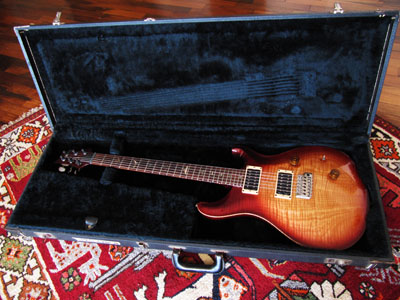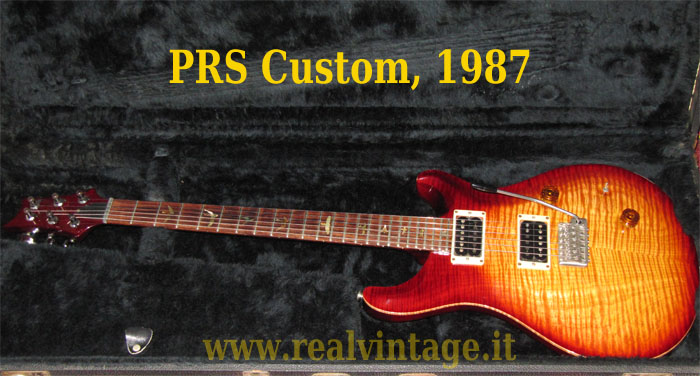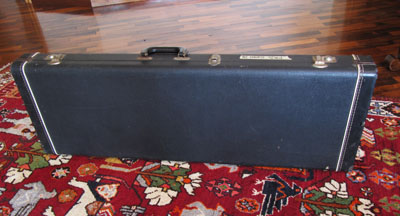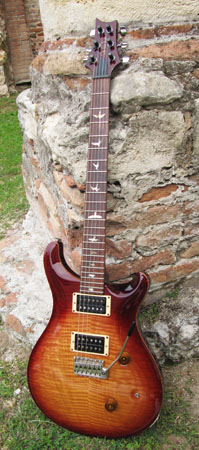
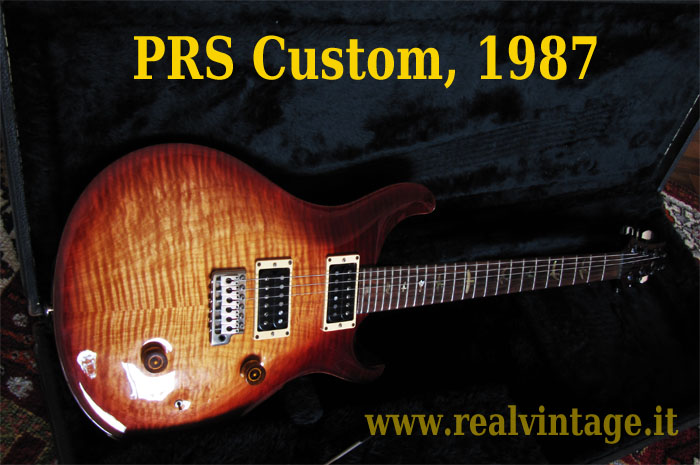
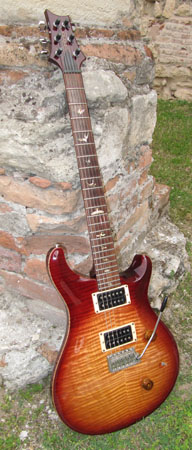



|
PRS - PAUL REED SMITH Custom, 1987 Born as "PRS Custom", the model would be known as Custom 24 (from the number of frets) starting in 1993, when also a 22-fret version was introduced. The birth of the Custom, introduced at tha annual NAMM in February 1985, takes place in the old Virginia Avenue factory in Annapolis, Maryland. The real Golden Age of Paul Reed Smith's guitars. This guitar has all the early specifications of the model and is in 100% original conditions. The body and the one-piece neck are made of mahogany, the top is highly flamed maple in the best Paul Reed Smith tradition, the fretboard is made of beautiful Brazilian rosewood - like all the earliest Customs - and is inlaid with the classic birds in mother of pearl. The rich cherry sunburst finish is masterfully crafted and goes from the dark-red of the edges to the honey-yellow of the central part of the top. The two pickups are the PRS Standard Bass/Treble humbuckers with the typical circuitry of the early Customs, with a master volume, a five-position rotary selector and the sweet switch tone filter, which would be the standard tone control before the introduction of a more conventional potentiometer in 1991. The original hardware includes the Schaller locking tuners with the PRS logo, the Mann-made bridge-vibrato unit typical of the pre-90 era, with bridge plate and inertia block cast in one piece of chrome-plated brass. The original nut is made of Teflon/Nylon composite material. The guitar comes with its beautiful original hardshell case. It's the first time we have PRS in our inventory, and there's a reason for that: among the instruments born in the '80s, there's not one that has the same importance in the history of the electric guitar. While Gibson and Fender were keepon mass-producing Strats and Les Pauls, Paul Reed Smith hit the market with his high-quality guitars, innovative and traditional at the same time: instruments that tell new and old tales of lutherie, woods, neck shaping, sound, research and pure beauty. My personal opinion is that these old PRS's are among the very few guitars from the '80s that will gain a collectible status: and not because they were built to be collected, but because they did play a leading role in the search for innovation and recovery of the tradition of quality and old-time craftsmanship, true heritage of the Golden Age of the American guitar, lost through the CBS and Norlin years. The future vintage? Maybe, but one thing's for sure: in the history of the American electric guitar, these old PRS have meant much more than their later, highly ornate versions, designed more for the wealthy living-room player than for the working musician. This is the real deal: a great looking, great playing, great sounding guitar, built to make music for many years to come.
|
